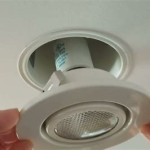Kohler Bathroom Sink Drain Stopper Parts: A Comprehensive Guide
The bathroom sink drain stopper assembly is a seemingly simple mechanism that plays a crucial role in the functionality of a bathroom sink. While often overlooked, its proper operation ensures the sink can effectively hold water and then drain it as needed. Kohler, a leading manufacturer of plumbing fixtures, offers various drain stopper designs, each utilizing a specific set of parts designed to work in harmony. Understanding the names and functions of these individual components is essential for troubleshooting issues, performing repairs, or replacing worn-out parts. This article provides a detailed overview of the common parts found in Kohler bathroom sink drain stopper assemblies, focusing on their names, purposes, and potential problems.
The typical Kohler bathroom sink drain stopper assembly consists of several key components. These parts can vary slightly depending on the specific model and style of the sink and drain system. However, the fundamental principles remain consistent. The following sections will dissect the anatomy of a standard Kohler drain stopper, identifying each part and its specific role in the overall operation of the drain.
The Drain Body and Flange
The drain body is the primary housing for the entire drain stopper assembly. It is usually made of metal, such as brass or chrome-plated materials, for durability and resistance to corrosion. The drain body is installed into the sink basin's drain opening and connected to the drainpipe below. It provides the structural foundation for all other components. The drain body's construction is crucial for a watertight seal, preventing leaks and ensuring proper drainage.
Integral to the drain body is the flange, which is the visible, often polished, part that sits flush against the sink basin. The flange acts as a decorative cover for the drain opening and provides a secure and aesthetically pleasing interface between the sink and the drain assembly. It typically incorporates a rubber or silicone gasket underneath to create a watertight seal against the sink's surface. The flange is usually threaded to allow for secure fastening to the drain body.
The drain body usually has openings or ports for connecting the various linkage components that operate the stopper mechanism. The location and size of these ports are specific to the drain design and are critical for proper installation and function. Any damage or corrosion to the drain body can compromise the entire drain system and may require replacement of the entire assembly.
The Stopper
The stopper is the part that physically blocks the drain opening, preventing water from flowing out of the sink. Kohler stoppers are commonly made of brass, plastic, or a combination of both. Different stopper designs exist, including pop-up stoppers, lift-and-turn stoppers, and grid stoppers. The specific design dictates how the stopper is operated and its interaction with the other drain components.
The pop-up stopper is a common type that is operated by a lever or knob located near the faucet. The lever, when activated, raises or lowers the stopper via connecting linkages. The stopper itself is designed to fit snugly into the drain opening, creating a watertight seal. The bottom of the stopper often has a rubber or silicone gasket for improved sealing. The quality and condition of the stopper are critical to preventing leaks and maintaining the sink’s ability to hold water.
Lift-and-turn stoppers, as the name suggests, are operated by lifting the stopper and turning it to lock it in the closed or open position. These stoppers typically have a threaded stem that engages with a corresponding mechanism within the drain body. They are often more robust than pop-up stoppers but can be more difficult to adjust or repair. Over time the threading can wear down, making it difficult to lock into place.
Grid stoppers are a simpler design, consisting of a grid-like structure that allows water to drain slowly while preventing larger objects from entering the drainpipe. They are typically not designed to create a completely watertight seal, so they are more suitable for sinks where a full stopper function is not required. These stoppers require minimal parts and are easy to clean.
The Linkage: Connecting Rod, Pivot Rod, and Clevis Strap
The linkage system is the mechanism that connects the stopper to the operating lever or knob. This system typically consists of several interconnected parts: the connecting rod, the pivot rod, and the clevis strap. The design and arrangement of these parts vary depending on the type of stopper mechanism used.
The connecting rod, also known as the lift rod, is typically a vertical rod that extends from the operating lever (located near the faucet) down to the pivot rod. It translates the motion of the lever into a vertical movement that raises or lowers the stopper. The connecting rod usually has threaded ends or adjustable clips to allow for fine-tuning of the stopper's position.
The pivot rod is a horizontal rod that passes through a hole in the drain body. One end of the pivot rod is connected to the connecting rod, while the other end is connected to the stopper. When the connecting rod moves up or down, it pivots the pivot rod, which in turn raises or lowers the stopper. The pivot rod must be properly aligned and lubricated for smooth operation. The pivot rod is held in place by a nut which is screwed tightly around the rod on the exterior. This nut can become corroded and difficult to remove.
The clevis strap connects the pivot rod to the stopper. It is often a small, U-shaped piece of metal or plastic that attaches to both components. The clevis strap allows for a secure and adjustable connection, ensuring that the stopper moves in sync with the pivot rod. The clevis strap may also have multiple holes or slots, allowing for adjustments to the stopper's height and travel distance. Often the clevis strap is made of a thin metal which can become corroded over time and break.
Other Important Components
Besides the major components described above, other parts contribute to the proper functioning of the Kohler bathroom sink drain stopper assembly. These include washers, gaskets, nuts, and screws, each playing a specific role in creating a watertight seal and securing the assembly.
Washers and gaskets are used to create watertight seals between different parts of the drain assembly. They are typically made of rubber, silicone, or other compressible materials. They are placed between the drain body and the sink basin, between the flange and the drain body, and around the pivot rod to prevent leaks. Over time, washers and gaskets can deteriorate, crack, or become brittle, leading to leaks. Regular inspection and replacement of these parts are essential for maintaining a leak-free drain system.
Nuts and screws are used to secure the various components of the drain assembly together. They are typically made of metal and are designed to withstand the forces exerted during operation. The drain flange is held secure to the sink by nuts that are screwed up tight to the drain body. The pivot rod is held in place by a nut on the exterior of the drain pipe that is tightened down to remain in place. Proper tightening of these fasteners is crucial for preventing leaks and ensuring the stability of the drain assembly. However, overtightening can damage the parts or strip the threads, so care must be taken during installation and repair. The material that these nuts and screws are made of can corrode making them difficult to remove when repairs are necessary.
Additionally, some Kohler drain stopper assemblies may include a strainer basket, which is a small basket that sits inside the drain opening to catch hair and debris. Strainer baskets prevent clogs in the drainpipe and simplify cleaning. Regular cleaning of the strainer basket is essential for maintaining proper drainage and preventing backups.
Proper identification of each of the Kohler bathroom sink drain stopper parts is critical in determining what needs to be replaced or repaired. When attempting to replace or repair a drain stopper part, it is essential to identify the specific model of the sink and drain assembly. Kohler provides detailed parts diagrams and exploded views for their products, which can be invaluable for identifying the correct parts. Consulting these diagrams and comparing them to the existing parts can ensure that the correct replacements are obtained. It is also advisable to take photos of the drain assembly before disassembly to aid in reassembly and ensure that all parts are installed in the correct order and orientation.

Kohler Standard Er Drain With Overflow In Vibrant Brushed Nickel K Rh1274364 Bn The Home Depot

Kohler Standard Er Drain With Overflow In Matte Black K Rh1274364 Bl The Home Depot

Kohler Premium Er Drain With Overflow In Polished Chrome K Rh1464524 Cp The Home Depot

Kohler Premium Er Drain With Overflow In Polished Chrome K Rh1464524 Cp The Home Depot
Kohler Sink Parts Drains Clinton Danbury Fairfield Farmington Hartford Stamford Torrington Great Barrington

Kohler Part 78172 Cp 1 55 In Diameter Stopper Assembly Polished Chrome Pop Up Drains Parts Home Depot Pro

Stopper 1036994 Cp Oem Kohler Ereplacementparts Com

Kohler K 78172 Cp Stopper Assembly And Adjustable Stem Build Com

K 7126 Pop Up Bathroom Sink Drain Kohler

Kohler 1274350 2bl Drain Stopper Assembly General Plumbing Supply Inc







